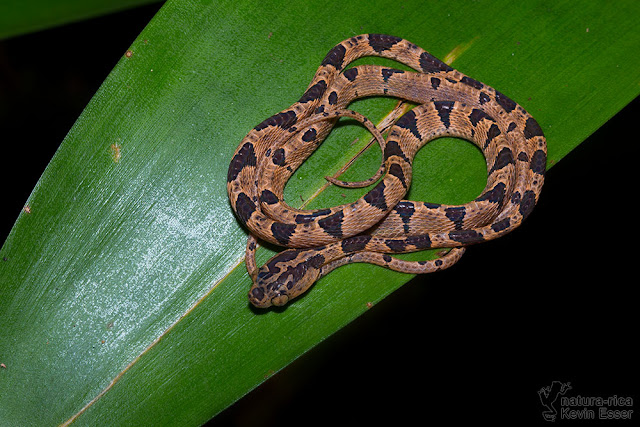Since January I am working (volunteering) for Callidryas Tours and Arenal Oasis as a tour guide. At the
Arenal Oasis Eco Lodge I saw numerous animals, especially during the night hikes. Here I want to share some of those with you.
This cute Powdered Glass Frog (Teratohyla pulverata) messures barely a length of 3 cm (1.2 in) max. Due to their small size and good camouflage, they are hard to find.
I found this juvenile Blunthead Tree Snake (Imantodes cenchoa) coiled up on the leaf of a bromelia. These snakes feed mainly on frogs and lizards.
Shiny green Rhinoceros Katydid (Copiphora cultricornis) nymph.
The Pygmy Rain Frog (Pristimantis ridens) is very common in this area. Growing to 2.5 cm (0.98 in), this is another very small species.
Quite rare to see: Striated Webfoot Salamander (Bolitoglossa striatula). This species occurs in Honduras, Nicaragua and Costa Rica.
This big ant is 3 cm (1.2 in) long and feared by man. The sting of this species is considered to be the most painful sting of the entire insect kingdom. It's described to be as painful as a gunshot. That's why this ant is called Bullet Ant (Paraponera clavata).
The Red-eyed Treefrog (Agalychnis callidryas) should be part of every night hike in Costa Rica...
Beautiful coloration on this juvenile Eyelash Viper (Bothriechis schlegelii). They are ambush predators, so they can remain motionless for hours.
And thus the circle closes, I finish this report as I started it: with a member of the amphibian family called
Centrolenidae. This one is an Emerald Glass Frog (Espadarana prosoblepon).









































